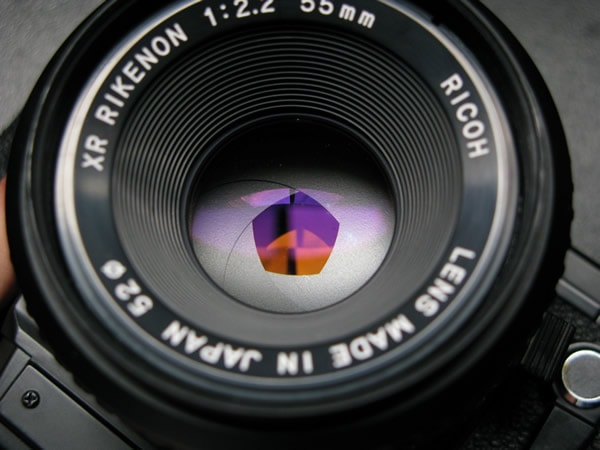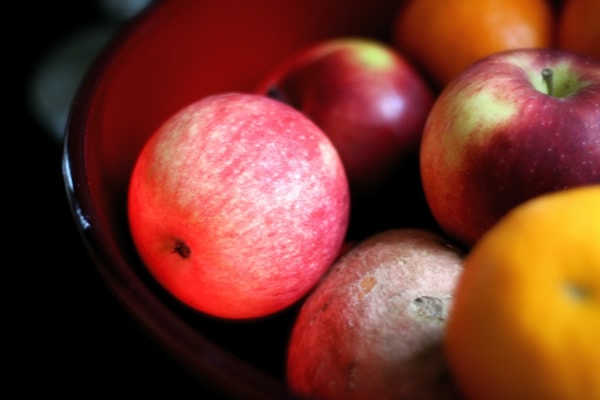Aperture 101
There is a lot more to photography than just having a good camera or knowing which scenes to shoot. In fact, there are three essential things that you need to take note of if you want to create pictures that tell interesting stories: a camera’s shutter speed, ISO and the aperture.
The shutter speed pertains to the exposure time while the ISO measures your camera’s sensor to light. Aperture, on the other hand, helps you create dimensions to your photos. It is one of the first things that you should learn about in photography.

photo by nayukim
What is Aperture?
Merriam-Webster defines aperture as:
the opening in a photographic lens that admits the light.
More specifically, aperture is the size of the hole in the camera lens that lets the light go through. It functions pretty much like your eyes, with your cornea gathering and passing light onto the iris. The iris is what controls your pupil, which is where the light passes. Therefore, the pupil is to the eyes what the aperture is to your camera.
The aperture has a very significant role. It contributes significantly to how your photo will turn out, as the right amount of light is essential in adding life, color and depth to the images you shoot. Right aperture setting = striking photos.
Aperture Size and F-Stops
A mechanical diaphragm is what controls the aperture size. Its main function is to control the amount of light that enters or goes into the camera body. It blocks light and lets in only the light that passes through the aperture. When light passes into the camera, the diaphragm either expands or decreases in size according to the amount of light that comes into the opening. For a clearer understanding of how a mechanical diaphragm works, think of your eyes’ irises.
The aperture is identified by numbers known as f-stops. In simple terms, f-stops describe or define how open or closed your aperture is. Examples of f-stops are f/1.4 and f/32. The values of these numbers, however, are not what you expect them to be. The higher numbers do not necessarily mean larger apertures. In fact, the smaller f-stops are the ones that pertain to large apertures, while the larger f-stops are for smaller apertures. So, smaller f-stops = large apertures; larger f-stops = small apertures.
Just like the pupil of our eyes, the larger the aperture, the more light enters into the opening and vice versa. What does this mean for you? You’ll need to understand the DOF in order to find the answer to this.
Depth of Field or DOF
DOF refers to the amount of distance of the nearest and farthest focused objects. It is controlled by the aperture. Therefore, your image’s sharpness depends on the aperture size or f-stops. Photographers who want blurry backgrounds to isolate subjects use small f-numbers. But if you want both your background and foreground as sharp and clear as a crystal, you should use a larger f-number.

photo by Jesse Gardner
For example, you want to focus on just one piece of apple in a fruit bowl filled with other fruits. To render the other objects (fruits in the background) blurry, you should use either aperture f/1.2, f/1.4 or f/1.8 (the smaller the f-stop the better). But if your goal is to picture a whole bowl of fruits, go for smaller apertures or larger f-numbers like f/6.0 or even f/11 or f/22 (if you want the foreground and background on the same sharpness level).
You can also produce a shallower DOF if you change the distance of your camera from the subject. Even if you use the same aperture and lens, this will create a different effect. This is because when you move your camera really close to the subject, your background will not come out as sharp and focused as your foreground even if you go for large f-numbers. This is a situation commonly experienced by non-professional photographers and hobbyists.
If you’re positioning the camera as close as you can to the subject because you want to focus on one particular detail (like a house’s front door, for example), choose smaller f-numbers or larger apertures. Doing this will render the foreground (your main subject) crisp and clear, while the background is as blurry as it can be. A lot of photographers use this to create a dramatic effect.
Maximum or Minimum Aperture?
Camera lens have a maximum and minimum aperture. It is important to know such details about your camera because this will help you determine what kind of photos you can come up with, especially if photography is a means of livelihood for you.
To help you understand what kind of lens you need, here’s an example. If your camera lens had an aperture range of f/4 to f/32, this means that your minimum aperture is f/32, while your maximum is f/4.
Many photographers prefer maximum aperture over minimum for two important reasons: speed and light.
Maximum aperture camera lenses are classified as fast because there’s more shutter speed. And with their wider aperture, these fast lenses get more light. So if you have a maximum aperture of f/1.2, you can take photos in an area that does not have a lot of light. In some instances, you can even take shots in low lighted areas without the aid of a flash. Also, the fast shutter speeds allow you to create sharp images in such settings.
For most photographers, an f/2.8 aperture is already desirable since it is wide and fast.
Modern Cameras
New cameras, the modern and highly technical ones like digital SLRs and even some mirrorless models, have made the task of changing apertures quite easy.
You can now choose to adjust your aperture manually or through the Aperture Priority Mode (“A” or “Av”, depending on your camera model). The second mode is where you set the f-stop and the ISO yourself while the camera sets the shutter speed.
If taking pictures is more than just a hobby for you, then you should seriously learn how to use aperture properly. With correct aperture use and setting, you will be able to control the outcome of your photos. Knowing how to control the light that passes through the lens, as well as how to properly manipulate Depth of Field in your photos, will be relevant in helping you produce images with clear character and dimensions.
